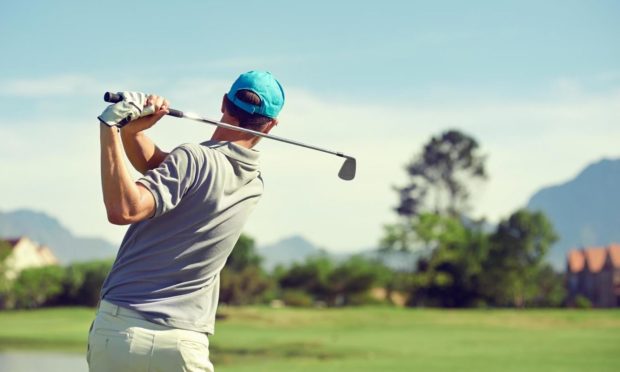Nearly two and a half million people returned or took up golf in Great Britain and Ireland in the last year according to figures released yesterday by the R&A.
The governing body worked with the unions in Scotland, England, Ireland and Wales to arrive at a figure representing the “lockdown leap” in numbers playing the game during the Covid-19 pandemic.
Unlike most sports, golf was judged to be safe to play with suitable physical distancing. It did shut down for several weeks in England and Ireland but in Scotland remained open for most of the last year.
The figures from two reports by Sports Marketing Surveys show more women and younger people playing. There are increases in participation at all forms of the game from full-length courses and clubs to driving ranges, Par 3 golf and even pitch and putt.
‘Biggest responsibility is not to take that increase for granted’
R&A chief executive Martin Slumbers welcomed the increases but stressed the need not to take them for granted.
“I am really enjoying the fact that golf is increasing participation at the moment,” he said. “But I’m also extremely conscious that the vast majority of that has been driven because of the impact of Covid-19 on other sports that those people used to play.
“The biggest responsibility we have is not to take that increase for granted. To keep trying to reinforce why when you’re able to go back and play football or play rugby or any other sport, why you want to keep being a member of a golf club and keep playing golf.
“We will use all of our assets to be able to sell that – sell the story about our sport. One of the great benefits of Phil Mickelson winning (the PGA Championship at 50) last week was showing longevity and managing your health.
“Golf is a great game to play and can be played for a long time, even at the very highest level.”
‘Golf has shown it can provide significant health benefits’
Phil Anderton, Chief Development Officer at The R&A, said, “We have seen a real surge in the number of golfers in Great Britain and Ireland playing the sport.
“This is reflected by the high demand for tee times and clubs reporting a strong interest in membership last year.
“Golf has shown that it can provide significant health benefits. This has been important for many golfers during these very challenging times.
“It is vital that golf seizes the opportunity to maintain this heightened interest by offering new and returning golfers compelling reasons to stay within the sport and enjoy it with friends and family.”
In Great Britain, the total adult golfers on 18 or 9-hole courses increased by 2.1 million. 16% were new golfers trying the game because of the pandemic. They reduced the average age of golfers from 46 to 41.
Participation doubles at ranges, par 3s and pitch and putt
Participants at driving ranges, Par 3 courses and pitch and putt all doubled in number. A quarter of women taking part were new to the game during the pandemic.
Anderton added, “The mental and physical health benefits of golf have helped boost participation in 2020. That is hugely encouraging given the sport offers a wonderful form of exercise out in the fresh air for all ages and abilities.
“With more female players also coming into the sport, it presents an opportunity for golf clubs to harness interest from this key demographic.
“The campaign encourages clubs to consider how they can attract more women and girls into the sport. This demonstrates that it is an enjoyable pastime and career for people of all ages and backgrounds.”
